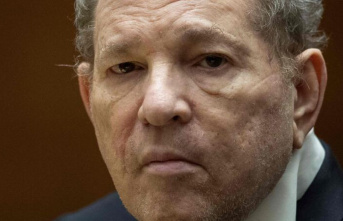The unit to which Viteli belongs takes a break. They've driven back a couple of miles in their truck to drink coffee and smoke a cigarette. It has been an intense night. Russian forces have been trying for several days to advance towards the last redoubts in Luhanks province under the control of Ukrainian forces; With each passing day the battle becomes more intense. The Moscow army constantly attacks with artillery, bombs from its planes and at night builds temporary pontoons to cross the Siverski Donetsk River in the vicinity of Bilahorivka, which has become the center of the fighting in recent days.
Some Ukrainian soldiers have assured that the town is practically burned as a result of the crossfire. The Ukrainians and the Russians drop artillery from their positions and the planes reinforce with bombardments. There, the fate of at least 60 people who sought refuge in the basement of a school a week ago is still uncertain. A bomb dropped by Russian aviation would have depleted the oxygen inside the shelter, causing the death of those who were hiding there, according to Shama, a veteran military doctor who works on this front. President Vlodomir Zelenski has assured that they are dead, but no rescue mission has been able to advance the excavation as a result of the fighting.
Viteli's mobile images have confirmation of what is happening in the vicinity of Bilahorivka. He shows how several Russian tanks have managed to cross over to the Ukrainian side, but also how the two enemy bridges are destroyed. "Here is a tank that is now drowned," she says wryly, showing one of the videos stored on her device showing a submerged tank in water. The specific job of this 26-year-old man, tall and with a blond beard, is to operate the drones with which they monitor the actions of the enemy.
He has been fighting since 2014, especially in this area of Donbass. When the battle for Luhanks raged, his unit was near Kharkiv, and they were quickly deployed to the area. As has happened with hundreds of soldiers who have arrived in the east of the country in recent days. The same goes for weapons. More than a dozen tanks and heavy artillery were being transported to this sector on Thursday. Shama, the doctor, assures that these new weapons supplied by the West allow better aim and attack the enemy from a greater distance, but the Ukrainians continue to lose in the sky.
This war is also a drone war. The Russians use them constantly to identify Ukrainian positions and pinpoint the aim of their artillery.
"Many of these tanks that crossed are already destroyed, but the fighting is intense," says Viteli, showing a column of at least six armored vehicles near a river. Days before, some Ukrainian soldiers spoke of 80 Russian soldiers who had crossed. The seriousness of his unit commander – who avoids any contact with foreigners – is a sign that the situation is not easy. In the evening of Thursday, more checkpoints were erected on the road that leads from Bajmut to the interior of the province.
In a matter of hours, the security measures were tightened, the controls became stricter and the few cars that managed to be evacuated from nearby towns came with broken windows and shrapnel holes in the bodywork. "We need them to close the sky for a few days to stop them and advance," says one of the soldiers who comes from the front. By the time we found him, he and a dozen men had driven back a few kilometers to flee Russian attacks on the road. The main objective of the Moscow army is to take control of this small strip of asphalt that goes into the interior of the province between green fields where crops of wheat and corn grow. If they succeed, they will block access to the cities of Lysichjanks and Severodonetsk, the largest city in Luhansk province, which is practically under siege.
The Russians would be looking to create a corridor connecting the troops stationed near Bilahorivka with those who have taken control of Popasna, under Russian control since the beginning of the week. Yesterday morning the commander of the area prevented the passage to nearby towns, some of them destroyed. The planes had been circling the place all night; the alarms sounded. "It's not a good idea to cross," said a soldier who was resting with his unit in a field with a frightened expression.
If the Russians manage to unite these two fronts, they will end up totally disconnecting the Luhansk region. And it would also clear the way for Lysichjanks but especially Severodonetsk to be besieged. Already when we visited them last week, life in these towns was "hell", according to some inhabitants who remain despite the continuous attacks, the lack of basic services such as water or electricity and hunger. The kitchens of the houses had been taken to the street, where they cook on improvised wood stoves.
The attacks against the highway make it increasingly difficult to access these two towns, seven kilometers apart. Andrei, a humanitarian worker who visits the city to bring food, says that access to at least 15% of the city has already been lost. His parents, who decided to stay, live in a sector that he can no longer enter.
Severodonetsk was already disputed during the war that started in 2014 and was recaptured by the Ukrainians. Viteli assures that this can be repeated, as has also happened in Kyiv or Kharkiv. “The difference with 2014 is that now the planes have been deployed and they attack with greater intensity,” says Viteli before returning to the position from where he operates his drone.
4












